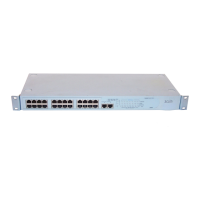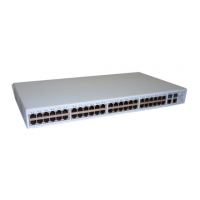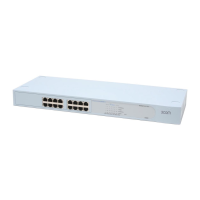1-10
z MSTP supports mapping VLANs to MST instances (MSTIs) by means of a VLAN-to-MSTI mapping
table. MSTP can reduce communication overheads and resource usage by mapping multiple
VLANs to one MSTI.
z MSTP divides a switched network into multiple regions, each containing multiple spanning trees
that are independent of one another.
z MSTP prunes a loop network into a loop-free tree, thus avoiding proliferation and endless cycling of
packets in a loop network. In addition, it provides multiple redundant paths for data forwarding, thus
supporting load balancing of VLAN data.
z MSTP is compatible with STP and RSTP.
Basic Concepts in MSTP
Assume that all the four devices in Figure 1-4 are running MSTP. This section explains some basic
concepts of MSTP based on the figure.
Figure 1-4 Basic concepts in MSTP
CST
Region A0
VLAN 1 mapped to instance 1
VLAN 2 mapped to instance 2
Other VLANs mapped to CIST
Region B0
VLAN 1 mapped to instance 1
VLAN 2 mapped to instance 2
Other VLANs mapped to CIST
Region C0
VLAN 1 mapped to instance 1
VLAN 2,3 mapped to instance 2
Other VLANs mapped to CIST
Region D0
VLAN 1 mapped to instance 1,
B as regional root bridge.
VLAN 2 mapped to instance 2,
C as regional root bridge.
Other VLANs mapped to CIST
BPDU BPDU
C
D
B
A
BPDU
MST region
A multiple spanning tree region (MST region) consists of multiple devices in a switched network and the
network segments among them. These devices have the following characteristics:
z All are MSTP-enabled,
z They have the same region name,
z They have the same VLAN-to-MSTI mapping configuration,
z They have the same MSTP revision level configuration, and
z They are physically linked with one another.

